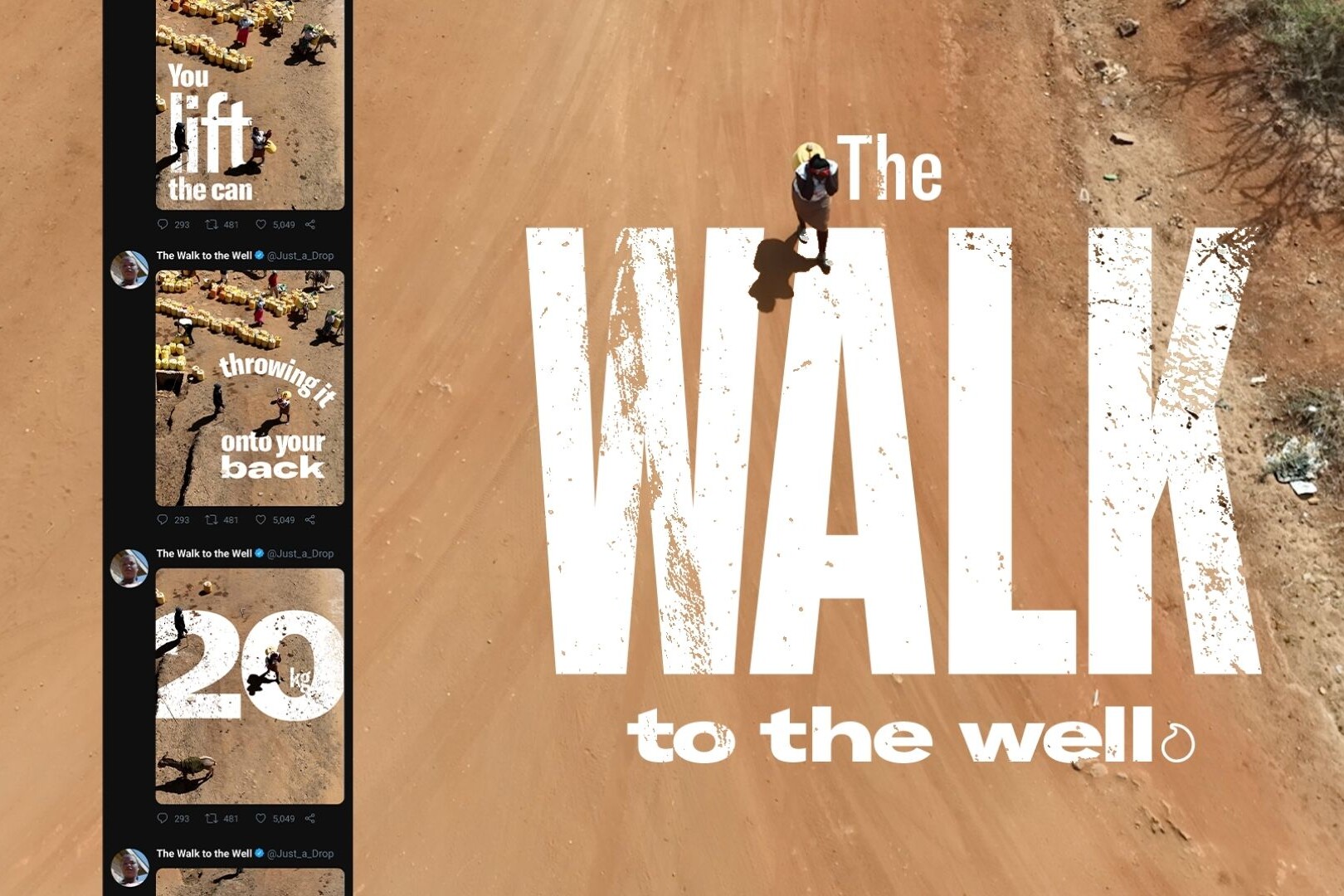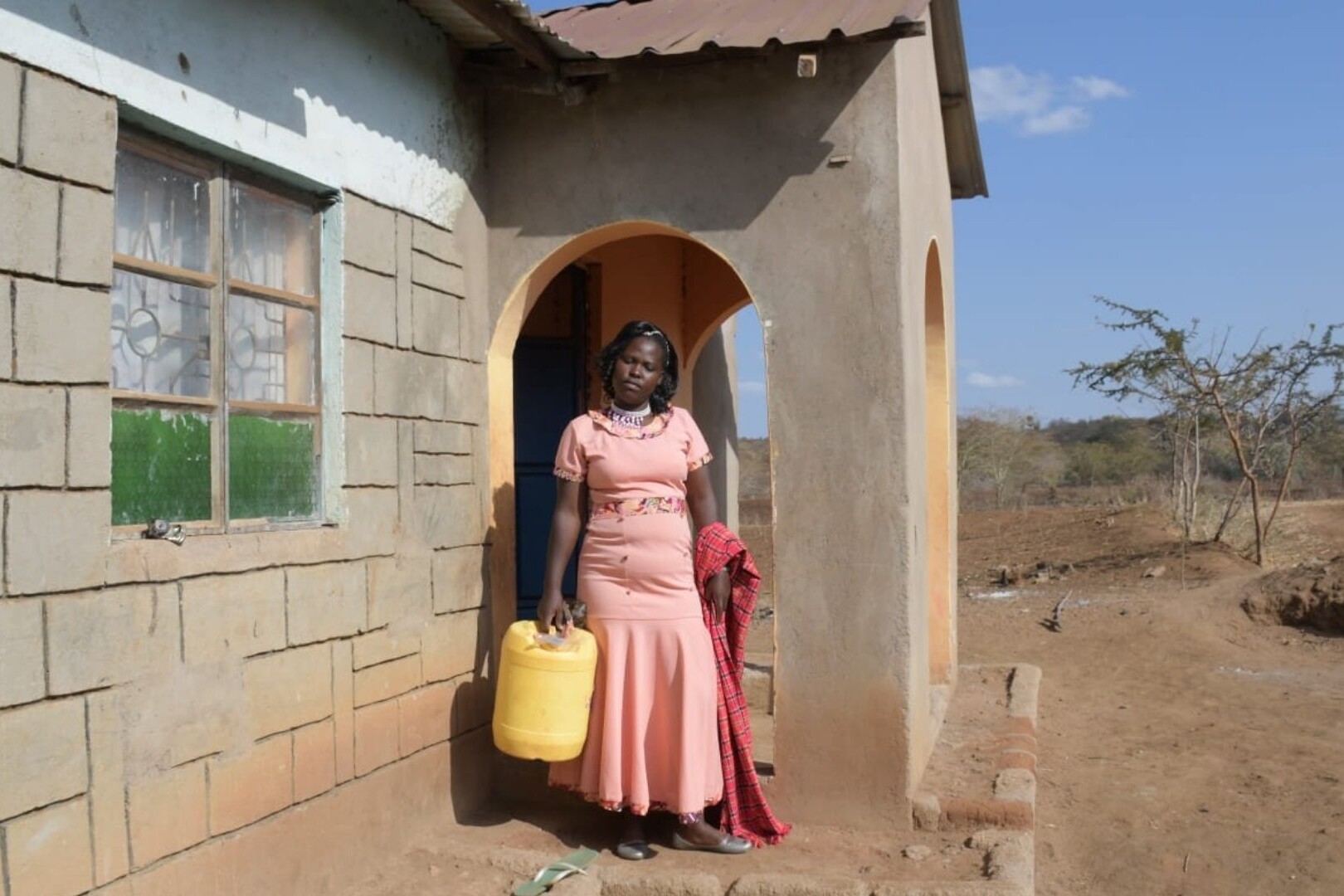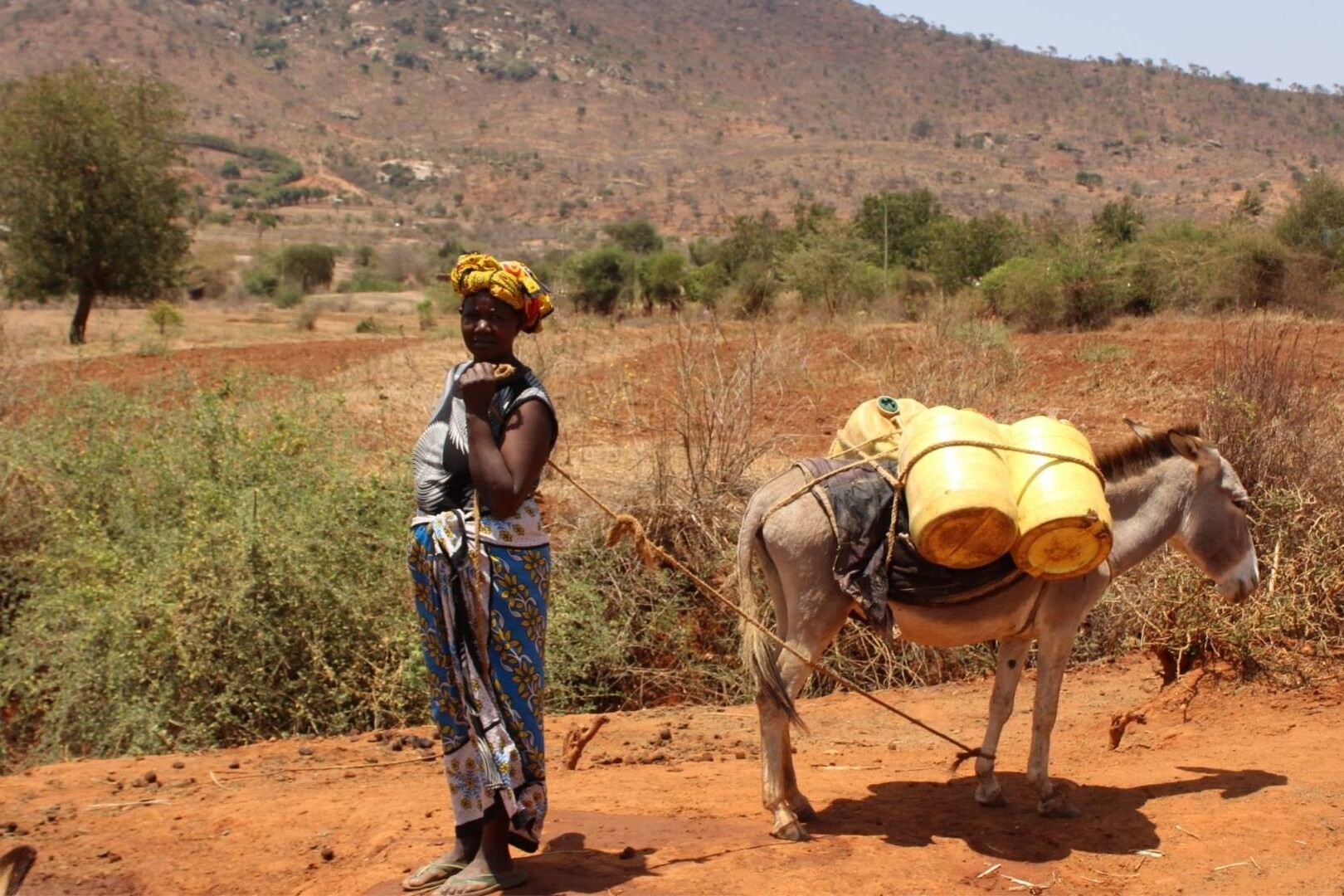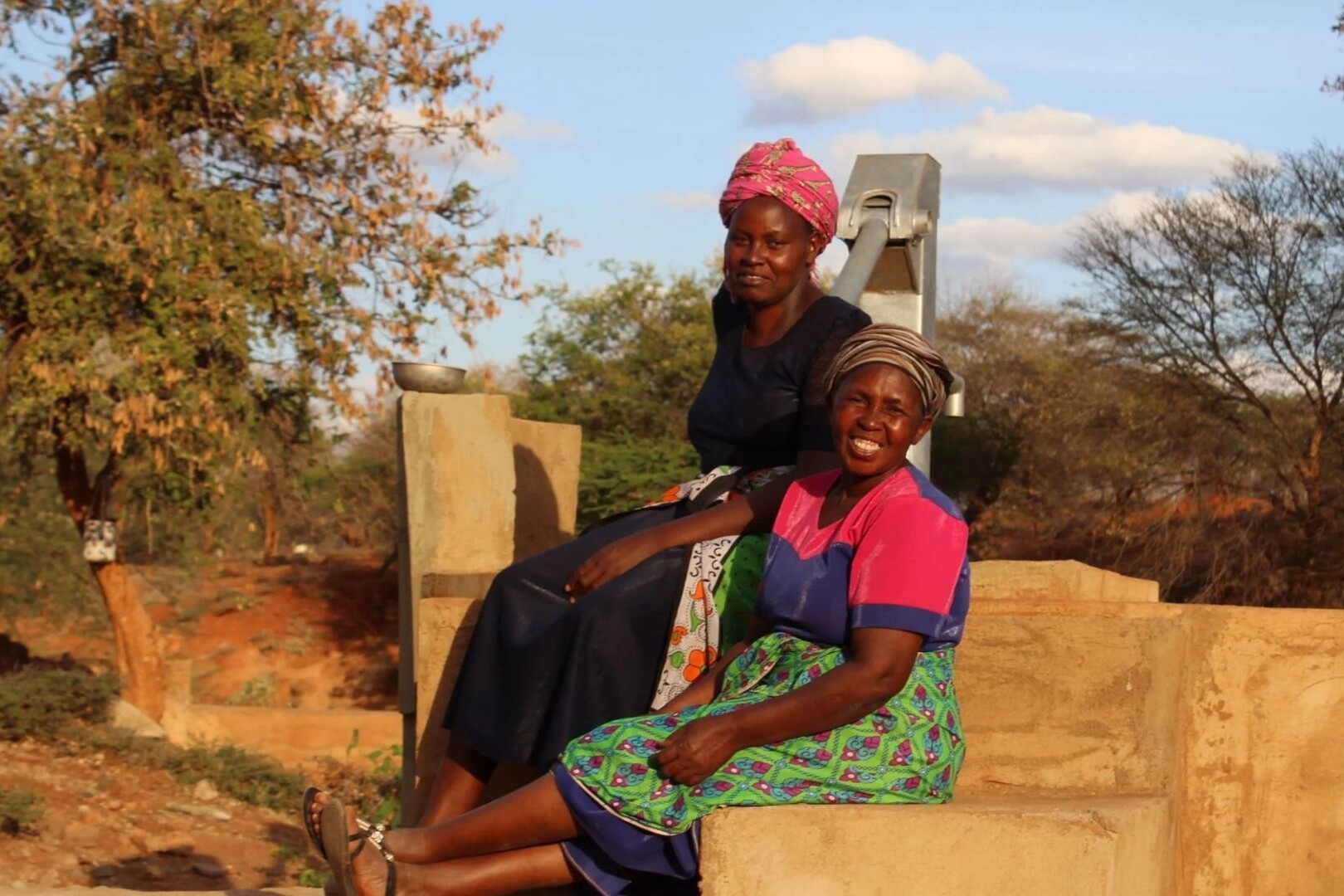Article
26th March 2023
6 minute read
For World Water Day, Just a Drop has built the longest twitter thread ever, following in the footsteps of Ann, a 32-year-old Kenyan mother who is forced to walk 9km every day to collect water.
With funding secured through Twitter’s #PoweredbyTweets, we’ve already been able to reach over 3 million people with the campaign! But when the thread was launched on Monday, we were surprised to see that there seemed to be one common question: “But why don’t people move closer to the water?”
In fact, as I write this on Day 3 of the campaign, it’s a question that’s been asked over 100 times!
Whilst living close to a water source might appear to be the obvious solution, it isn’t an option for most people, and below, we’ve given six key reasons why this isn’t the case.

1. Close water isn’t always clean water
In a lot of countries, there isn’t the infrastructure to pipe water directly into people’s homes or communities like we can in the UK. Instead, water needs to be collected from a readily available water source, often a river or a pond.
Living close to a river or pond might save people from needing to walk so far to collect water, but it doesn’t make that water any safer to drink. In fact, even natural water sources like rivers can be extremely dirty. They will often be shared with animals and livestock, can carry sewage and chemicals from upstream and can be full of rubbish and parasites that can cause diseases such as cholera.
And boiling this water doesn’t always make it much safer either – many of the chemicals found in river water can’t simply be taken out by boiling it. And boiling water uses more firewood which is bad for the environment.
2. Climate Change
Even when there is a close and clean water source, it might not be there forever. It could be an unreliable or seasonal source, or have too much demand on it, forcing communities to find alternatives.
We quite often find that when a community relies on a well for water, the well provides water during the rainy season, but dries up in the dry season. Communities then have no alternative but to find other water sources, some that are miles away.
Sadly, due to climate change, this problem is only getting worse. In Kenya, for example, people are experiencing the worst drought in over 40 years. More than four million people across the country are “food insecure”, and 3.3 million don’t have access to enough water to drink.
Droughts have always afflicted East Africa but, since 1999, they have doubled in frequency due to climate change. Now there is a drought every two to three years – since September 2021, Kenya has received less than 30 percent of its usual rainfall.

3. Human-wildlife conflict
A lot of the countries that Just a Drop works in are also well known safari destinations – beautiful national parks home to extraordinary wildlife! Whilst an incredible experience from inside a 4×4, when you are competing for the same water source, this wildlife can be extremely dangerous.
For instance, rivers in parts of Africa are frequented by crocodiles and hippopotamuses and community members are at risk of being attacked when collecting water. Hippos are known to kill 500 people on average a year in Africa – making them Africa’s most deadly animal. Living close to a river only amplifies these dangers and creates more instances of human wildlife conflict.
4. Unsuitable Land
Depending on the geography of a community, there are certain solutions to accessing water that work better than others. For example, where we work in Zambia there is a lot of ground water, so Just a Drop installs boreholes. In Kenya, we harness the weather patterns to install rainwater harvesting tanks as the area we work in has poor groundwater. Simply digging a well in a community in Kenya would not be a long-term sustainable solution, and frankly, would be a waste of your money.
Sadly, this is a mistake we know all too well. In the communities we work in, we often see broken boreholes and dried up wells – constructed by people with the best intentions but without the proper groundwork and due diligence being done ahead of the installation.
It’s for this reason that Just a Drop works so closely with communities. We lead surveys and community participation exercises to really understand the problems and find the best solutions. This includes taking into account the local water availability, geography, infrastructure, economic conditions and culture. Each solution is unique to each community.
To add to this, we ensure that the community are involved at every stage and are trained on maintaining the project and also fixing it. This helps it to last as long as possible, and ensures that your donations make a lasting impact.

5. Subsistence farming
In the world’s poorest communities, most people are subsistence farmers – they live off their land and rely on trading livestock and farming small scale crops to make a living.
If communities were to abandon their homes to move closer to water, they’d be leaving behind their only source of food and income, and would likely end up encroaching on another community’s land.
6. Urban Planning
In areas where water is more readily available, many people are faced with the prospect of living in an urban slum where the water is polluted and sanitation standards are extremely poor. This often puts people in a worse position than if they lived in a rural, yet poor, community.
There are also laws around where people can live. In the UK we couldn’t just all take the bricks from our houses and reassemble them next to the supermarket to save us from making the trip. We’d need planning and building permissions, not to mention that the land is probably owned by someone else.
It’s exactly the same in communities globally; a lot of land around water sources is already occupied, or owned.

Moving closer to a river isn’t the answer, but we have a solution…
We know that forcing communities to uproot is not the way to end the water crisis. The villages, although arid, are people’s homes, communities and businesses; they’re where their families live and have lived for generations, and community members are proud of their cultures, backgrounds and histories.
Instead, Just a Drop supports these communities by providing long-term and sustainable solutions that enable them to access safe water close to their homes – all year round. We prepare communities for the future – installing solutions that are good for the community and good for the environment – with many of them reversing the impacts of climate change.
Our approach is rooted in community-led development, rather than aid, as local ownership is vital to the sustainability of our projects. To add to this, we aim to monitor our projects for a minimum of 7 years after completion to ensure that they are the right solution and that the behaviour change becomes embedded in the community’s day to day life.
Each project is different – each village is assessed and the right solution is implemented depending on these assessments. This is also how our funding works – when we decide on a solution, we fund communities directly and we keep strict accounts so that we know the cost of every brick, nail and hammer that is used. We have a board of trustees, none of whom are paid, who scrutinise every project before we go ahead with it and a team of expert volunteers, such as hydrogeologists and engineers who audit every project and ensure that all donations go to where they should – in fact for every pound you donate, a minimum of 75p goes directly into our projects. If we are going to take donations – we want you to be able to trust exactly where the money is going and that it will have a long term impact.
We know that safe water, improved sanitation facilities and knowledge of safe hygiene practices leads to improved health, better education, secure food sources, improved rights for women, income generation and greater prosperity. It completely transforms lives.
If you’d like to make a donation to our vital work, then you can do so here:
Make a difference
Can you help to support people around the world with safe water, sanitation, and hygiene? Give once or on a monthly basis to be a change-maker.